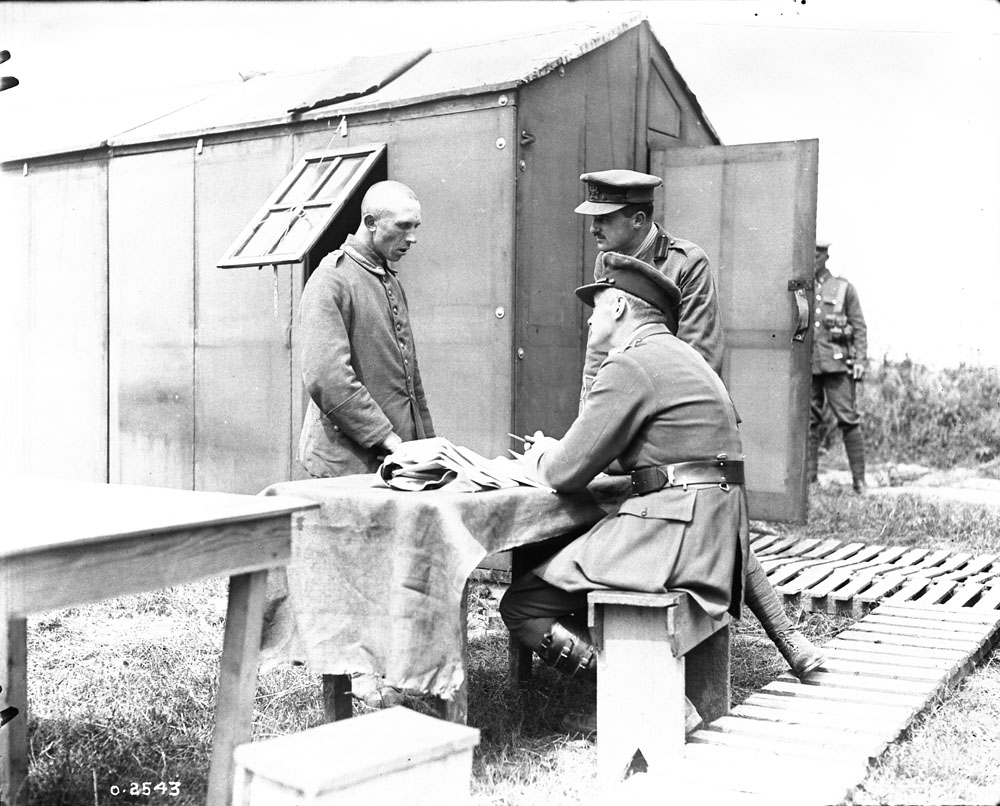About CEFRG
CEFRG is the Canadian Expeditionary Force Research Group (1914 – 1919). CEFRG is owned, operated and maintained by Edward Walshe, B. Eng. The group dedicated to the men and women serving with the Canadian Expeditionary Force (CEF). CEFRG evolved from personal research into the experiences of his grandfather, and great-uncle. Great-uncle, Sergeant Francis “Frank” Patrick Walshe served with 2nd Howitzer Battery, 1st Brigade, Canadian Field Artillery (CFA). Frank entered the war with Canada’s First Contingent on 11 February 1915 at St. Nazaire, France.

Grandfather, A./Bbdr. Richard “Dick” Francis Walshe, 61st Field Battery, 14th Brigade, entered the war on 22 August 1917, at Le Havre, France. Prior, older brother Frank wounded before the Battle of Flers-Coucelette. Frank invalided to England in September of 1916. When Dick met Frank in hospital, Frank had yet to receive his third and last amputation. Previously, Lt.-Col. John McCrae, author of the poem In Flanders Fields, had performed the first amputation of Frank’s leg. After Dick left Frank, he went on to participate in every major conflict of the Canadian Expeditionary Force following Passchendaele.

The 61st Field Battery found them just outside of Mons, when the war ended, also where it had begun. Later, Dick would March to the Rhine with the 1st Canadian Division. Followed by his participation in the Allied Occupation of Germany.
Afterwards, Dick fell seriously ill with Influenza, while awaiting demobilization in Belgium. Nursed back to health by the Dupont Family, he fell in love with the young widow, Mdme Annie Dupont.
What does CEFRG do?
CEFRG collects objects and stories that give an insight into experiences of the Great War. CEFRG preserves these tales for future generations. This brings them to today’s audience in the most powerful way possible.

The CEFRG investigated units, in addition to, individual men and women of the CEF during the Great War Centenary. CEFRG currently active in cases of identification and recovery of remains. The Winnipeg Grenadiers and Canadian Scottish cases active since 2015 and 2016, respectively.
Volksbund
Some cases may lead to the recovery of German, and other Commonwealth soldiers. Thus, CEFRG collaborates with Der Volksbund Deutsche Kriegsgräberfürsorge e. V. The Federal Republic of Germany charges the Volksbund as a humanitarian organisation. Volksbund records, maintains and cares for the graves of German war casualties abroad.
Lambis Englezos AM
In addition, CEFRG collaborates with Lambis Englezos AM. Lambis an amateur historian and ardent researcher regarding missing Australian service members of the Great War. Mr. Enlgezos honored with the award of an Order of Australia for his determination to recover 250 missing Australia troops. Enlgezos currently investigating at Pheasant Wood, with an additional 168 casualties.
Why not Ancestry?
This site relies heavily on several freely available online resources. The digitized collections held by Library and Archives Canada (LAC) of prime interest. These records include muster rolls, military service files, and unit war diaries. In addition, medal registers, and extensive photographic collections. On occasion, documentary art and posters utilized from published sources. Autochrome images of the Albert Khan collection the only instances of historic color images used. CEFRG does not allow, nor condone colorization of Great War images. Moreover, of particular interest are the Canadian War Records Office (CWRO) images in the MIKAN photo collection. At all times, CWRO images are kept in their original black and white format.

What distinguishes CEFRG is the expertise in transcription of service records and unit war diaries. Appreciation and knowledge of these records unlocks the stories of Canada’s rich military heritage. Often, these stories originate from visits to Commonwealth War Graves Commission and Volksbund Cemeteries. Therefore, CEFRG exists to respond to requests regarding units, battles, and most importantly, service records of the CEF. Do you want to know what your grandfather did in the Great War? Or perhaps, you have ‘adopted’ a soldier of your own? Help CEFRG to discover our shared military heritage by submitting your request.
What is MIKAN?
LAC operates a computer system called MIKAN. The name is based on an Algonquin word, meaning road, path or discovery. Miikan, in Ojibwe, means trail and sometimes road. The MIKAN system automatically assigns a MIKAN number to a record at all levels. Moreover, the MIKAN number a mandatory field in the MIKAN system. The number appears on each archival descriptive page, at the very bottom. Use the LAC Archives Search database to discover more.
Ne-kah-ne-tah
In conclusion, Ne-kah-ne-tah. We lead. Others follow.
More
Please Subscribe
Please subscribe to CEFRG to be notified by email when there are new posts. Subscription is free, and your email kept confidential.
Or Contact Us
Welcome to CEFRG
We Remember Them
